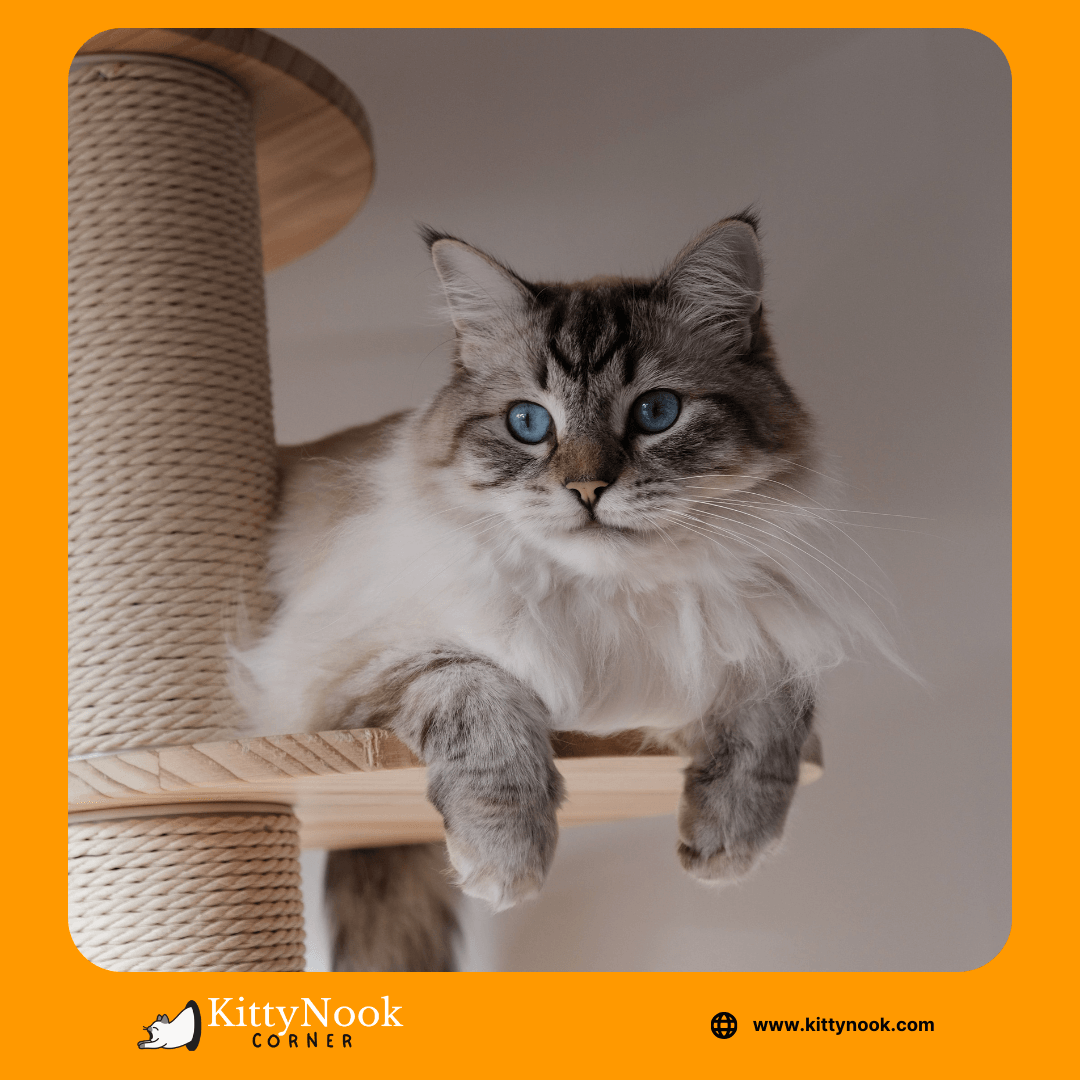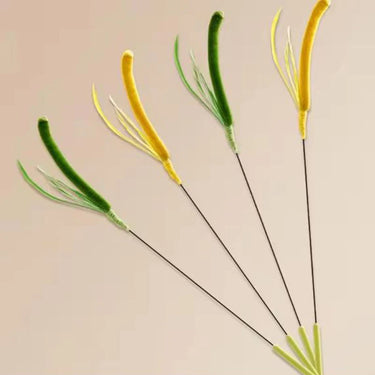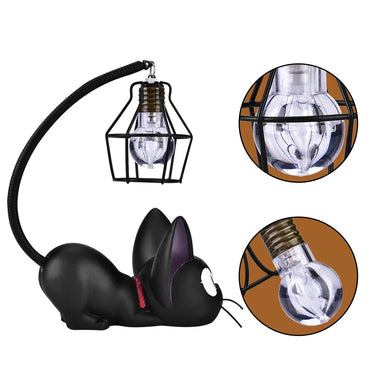Are you a cat parent looking to provide your feline friend a space to climb, scratch, and play? A DIY basic cat tree might be the perfect solution! Not only is it a fun project, but it also serves as a functional and enriching addition to your home for your furry companion. In this step-by-step guide, we'll walk you through creating a DIY cat tower tree so your cat can have an excellent perch and scratching surface.
Materials You'll Need:

- Plywood or MDF Board: Choose a sturdy base for stability.
- Tree Trunks or Thick PVC Pipes: To serve as the main support pillars.
- Sisal Rope: Essential for creating a satisfying scratching surface.
- Carpet or Faux Fur Fabric: For covering platforms and creating cozy spots.
- Wooden Planks: To create platforms at different levels.
- Wood Screws and Nails: For assembling the structure securely.
- Electric Drill or Power Drill: To develop holes for screws and fasteners.
- Screwdriver: For tightening screws and assembling different parts.
- Measuring Tape: To accurately measure dimensions for proper fitting.
- Pencil or Marking Tool: For marking where cuts and holes need to be made.
- Level: To ensure that the cat tree is straight and balanced.
- Wood Glue: To reinforce joints and make the structure more durable.
- Staple Gun: Useful for attaching fabric securely.
- Saw or Circular Saw: To cut and shape wood or other materials.
- Nails, Screws, and Fasteners: To securely fasten the different components.
With these tools and supplies ready, you'll be well-prepared to tackle the construction of your homemade cat tree and create a safe and enjoyable space for your feline friend.
Considerations for Safety and Stability

When designing your DIY cat tree, it's essential to prioritize safety and stability. Ensure that the structure is secure, with sturdy materials and solid construction.
Steer clear of sharp edges or loose components that might harm your cat. Ensure you have routine checks for safety and wear and tear, and make necessary repairs to keep the tree safe for your feline friend. By taking these precautions, you can create a cat tree that provides fun and functionality and ensures your furry companion's well-being.
Determining the Size and Layout

When designing your DIY cat tree, it's essential to consider the dimensions and arrangement that suit your space and cater to your cat's needs. Measure the available area and plan the placement of scratching posts, perches, and hideaways to create an engaging and cozy setting for your feline friend. Consider the number of cats you have and their size to ensure enough room for them to move around and climb. A well-designed cat tree will provide ample space for your cat to play, explore, and relax.
Incorporating Scratching posts, Perches, and Hideouts

Incorporating scratching posts, perches, and hideouts is essential for a functional DIY cat tree. Scratching posts fulfill cats' natural urge to rub, while perches and hideouts provide cozy spots for resting and observing their surroundings. These elements add excitement and comfort to your cat's play area.
Building the Cat Tree

Now that we have the considerations discussed let's get to the building!
Step 1: Design Your Cat Tree
Before diving into construction, sketch out a design for your cat tree. If you don't have the talent to draw your own, you may look through the internet for cat tree plans. Consider the height, number of platforms, and the placement of scratching posts. This will help you stay organized during the building process.
Step 2: Prepare the Base
Cut a sturdy piece of plywood or MDF board to your desired size for the base. This will serve as the foundation and make your cat tree stable. Don't forget to cover the base with carpet so it becomes cozy for your cat.
Step 3: Create the Support Structure
Attach the tree trunks or thick PVC pipes to the base by using wood screws and wood glue. These will be the main pillars or "trunk" of your cat tree, providing stability and support for the platforms.
Step 4: Wrap the Trunks with Sisal Rope
Take the sisal rope and tightly wrap it around the tree trunk, securing it with glue or a knot. The sisal rope will give your cat an irresistible scratching surface, promoting healthy claws.
Step 5: Build Platforms
Cut wooden planks to create platforms at different levels. Attach them to the tree trunk securely using screws and glue. Cover the platforms with carpet or faux fur fabric for comfort.
Step 6: Add Cozy Hideouts
Consider adding cozy hideouts or perches for your cat to relax in. Use carpet or fabric to create comfortable spaces that your cat will love.
Step 7: Secure the Structure
Ensure all elements are securely attached, and double-check for stability. Your cat tree should be able to withstand your cat's playful antics.
Step 8: Attach Additional Features
Incorporating toys and interactive elements will keep them entertained and engaged. Enhance your cat tree by adding dangling toys, hanging baskets, or other features to delight your cat. Adding ramps, ladders, and tunnels can also provide extra fun and exercise for your cat.
Step 9: Secure It to the Wall (Optional)
Consider securing the cat furniture to the wall for added stability, especially for tall ones. This prevents any accidental tipping.
Step 10: Introduce It to Your Cat
Once your DIY cat tower is complete, introduce it to your feline friend with treats or toys. Most cats will be eager to explore their new vertical playground.
Maintenance and Care

Keep your DIY cat tower clean and hygienic by vacuuming or wiping it down. Monitor for wear and tear and replace worn-out parts to ensure your feline friend's safety and enjoyment.
Conclusion

Creating a DIY cat tower benefits both cats and their owners. It is a rewarding project that helps your cat and adds a touch of creativity to your home. Remember to incorporate sisal ropes in this DIY project to ensure your cat has a dedicated space for scratching! Have fun with the process, protect your furniture, and watch your cat delight in their new favorite spot at home!





















